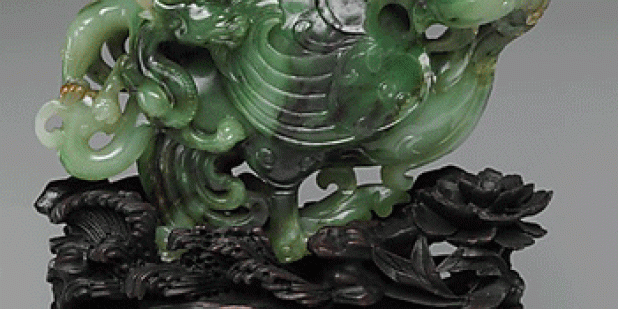Join us for a free one-day workshop for educators at the Japanese American National Museum, hosted by the USC U.S.-China Institute and the National Consortium for Teaching about Asia. This workshop will include a guided tour of the beloved exhibition Common Ground: The Heart of Community, slated to close permanently in January 2025. Following the tour, learn strategies for engaging students in the primary source artifacts, images, and documents found in JANM’s vast collection and discover classroom-ready resources to support teaching and learning about the Japanese American experience.
Colors of the Universe - Chinese Hardstone Carving
The Metropolitan Museum of Art features an exhibition of Chinese stone carvings from the Qing Dynasty.
Where

Stone carving is one of the oldest arts in China, its beginnings dating back to remote antiquity. Although jade, the mineral nephrite, was held in the highest esteem, all stones that could achieve a luster after polishing, be it agate, turquoise, malachite, chalcedony, quartz, jasper, or lapis lazuli, were also appreciated. Stone carving experienced an efflorescence during the Qing dynasty (1644–1911), when an abundant supply of raw materials, exceptionally accomplished craftsmen, and, in particular, keen imperial patronage contributed to the creation of numerous superb works.
The stone carvings of the Qing period can be grouped in three categories: personal adornments such as rings, bracelets, and pendants; articles for daily use (mainly in the scholar's studio) such as brush holders, water pots, and seals; and display pieces such as copies of antiques, miniature mountains, and animal and human figures, the latter being the largest of the group. The carvings can also be classified by their decorative style: archaic or classical, meaning their shapes were derived from ancient ritual vessels; "Western," which bore the influence of contemporary Mughal art from northern India; and new or modern, meaning novel shapes and designs created during the Qing dynasty.
A common decorative theme, especially among works of the new style, was the use of rebuses, which are symbols associated with auspicious meanings, to convey wishes for prosperity, longevity, good fortune, perpetuation of a family line, or academic success. The tradition began early but remained largely in the popular culture until the sixteenth and seventeenth centuries, when significant social changes and increased imperial patronage helped elevate the rebus to the high art of the court.
Featured Articles
Please join us for the Grad Mixer! Hosted by USC Annenberg Office of International Affairs, Enjoy food, drink and conversation with fellow students across USC Annenberg. Graduate students from any field are welcome to join, so it is a great opportunity to meet fellow students with IR/foreign policy-related research topics and interests.
RSVP link: https://forms.gle/1zer188RE9dCS6Ho6
Events
Hosted by USC Annenberg Office of International Affairs, enjoy food, drink and conversation with fellow international students.
Join us for an in-person conversation on Thursday, November 7th at 4pm with author David M. Lampton as he discusses his new book, Living U.S.-China Relations: From Cold War to Cold War. The book examines the history of U.S.-China relations across eight U.S. presidential administrations.




